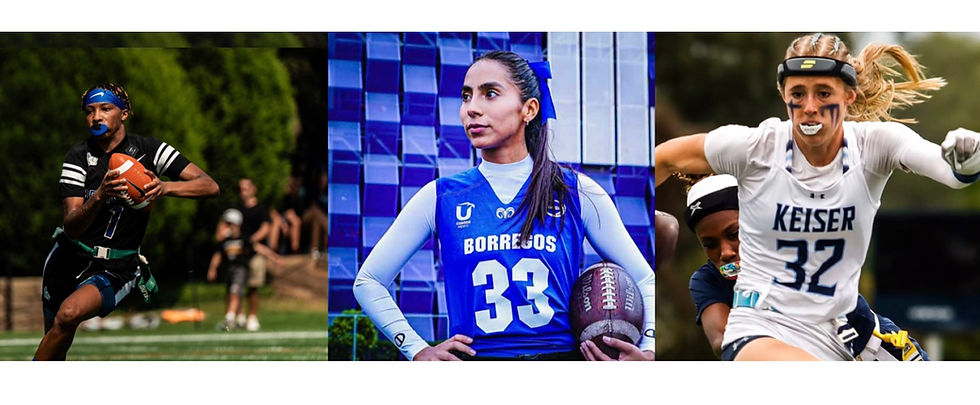NIL’s Treacherous Conflict of Interest Problem
- Spencer Bauer
- Jul 30, 2021
- 3 min read

With the implementation of “Name, Image, and Likeness,” (NIL) legislation around the country, student athletes are now able to profit off of their likeness and enter into endorsement contracts. While this is an exciting time for student athletes, there are still many obstacles and barriers involved in the early state laws that may prevent student athletes from getting paid. One of the biggest barriers to student athlete’s compensation will be conflicting contract interests with their university and their university’s athletic department. Under Florida law, student-athletes are prohibited from entering into a contract for NIL compensation that conflicts with a term in a university team contract. Similarly, California’s NIL law “prohibits a student athlete from entering into a contract providing compensation to the athlete for use of the athlete’s name, image, or likeness if a provision of the contract is in conflict with a provision of the athlete’s team contract.”
Since student athletes are prohibited from entering into agreements that conflict with the university's contract interests, student athletes are expected to enter into agreements that either coincide or do not affect the university’s contract interests while also disclosing their potential contracts with their university’s athletic department to prevent conflicting contract interests. Instructing every eligible college athlete to disclose their potential NIL endorsement deals to their university seems like a tall task for athletes, coaches and everyone else involved; however, most of the potential conflicting contract interests will involve the university’s major athletic sponsors. For example, a student athlete at The University of Alabama will likely know that their main apparel sponsor is Nike since the Nike logo appears on their jerseys and other athletic apparel. Thus, it would be very unlikely for a student athlete at Alabama to enter into an agreement with a competing athletic company like Adidas or Under Armor, especially when they could possibly enter into a NIL agreement with the same company that sponsors their university. Although it is unlikely for a student athlete to enter into a contract that conflicts with their current university or athletic department, it is bound to happen at some point in this NIL era. Will the student athlete be forced to resign from their university’s athletic team if they refuse to terminate the conflicting contract? Until a student athlete enters into a contract that conflicts with their university's contract interests, we do not have the precedent to answer these types of questions.
However, the majority of issues involving conflicting contract interests are likely to emerge before a student athlete agrees to attend an NCAA institution. With the emergence of NIL, student athletes will seek to get paid before choosing where they start their college career. Signing a significant deal with a major sports brand will definitely affect the student athlete’s ability to earn revenue, especially if the university the student athlete wishes to attend has a different major sports brand as their main sponsor. For instance, 17-year-old, Mikey Williams, became the first high school athlete to sign a NIL contract when he agreed to a deal with Excel Sports Management. Since Williams is considered to be one of the top national basketball prospects, he is projected to generate millions of dollars of his name, image and likeness rights. Although Williams could enter into blockbuster deals with major basketball brands, his endorsement choices will affect where he decides to enroll two years from now. If Williams were to enter into a contract with Nike, he would likely choose an institution that is sponsored by Nike and would allow him to gain revenue from the contract he signed while in high school. Williams, and other athletes in his position, would be unlikely to choose an institution that would not allow him to capitalize on the contract that he already had signed, which would result in the schools without a Nike sponsorship losing their chance to have an athlete like Williams play for their school.
Conflicting contract interests pose a variety of major issues and headaches for institutions going forward, especially for smaller institutions without major sport brand sponsors. While on the other hand, it also creates a multitude of issues for student athletes. Based on potential contract interests, are student athletes better off signing NIL contracts after they enroll at an institution? How will all student athletes disclose their contracts to their universities? Conflicting contract interests will be an important issue to keep in mind as other states continue to pass NIL legislation and NIL rules are fully implemented into college athletics.







FNaF doesn’t rely on gore or cheap tricks; its horror creeps in slowly through observation and realization.
EPS Machine EPS Cutting…
EPS Machine Eps Raw…
EPS Machine EPS Recycling…
EPS Machine EPS Mould;
EPS Machine EPS Block…
EPP Machine EPP Shape…
EPTU Machine ETPU Moulding…
EPS Machine Aging Silo…
EPTU Machine ETPU Moulding…
EPS Machine EPS and…
EPS Machine EPS and…
AEON MINING AEON MINING
AEON MINING AEON MINING
KSD Miner KSD Miner
KSD Miner KSD Miner
BCH Miner BCH Miner
BCH Miner BCH Miner
EPS Machine EPS Cutting…
EPS Machine Eps Raw…
EPS Machine EPS Recycling…
EPS Machine EPS Mould;
EPS Machine EPS Block…
EPP Machine EPP Shape…
EPTU Machine ETPU Moulding…
EPS Machine Aging Silo…
EPTU Machine ETPU Moulding…
EPS Machine EPS and…
EPS Machine EPS and…
AEON MINING AEON MINING
AEON MINING AEON MINING
KSD Miner KSD Miner
KSD Miner KSD Miner
BCH Miner BCH Miner
BCH Miner BCH Miner